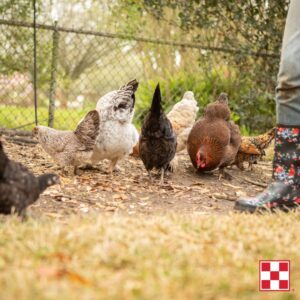 Summer Flock Care: How to Keep Chickens Cool! Summer is a time for fun, adventure and excitement – for both backyard chicken raisers and their flocks. To keep birds cool in the summertime, provide fresh, cool water for hydration, maintain chicken coop ventilation and choose a layer feed with the Purina® Oyster Strong® System to help your hens lay strong and stay strong.
Summer Flock Care: How to Keep Chickens Cool! Summer is a time for fun, adventure and excitement – for both backyard chicken raisers and their flocks. To keep birds cool in the summertime, provide fresh, cool water for hydration, maintain chicken coop ventilation and choose a layer feed with the Purina® Oyster Strong® System to help your hens lay strong and stay strong.
As humans, our habits change in the summer. We adapt to stay comfortable. By providing our backyard chickens the tools they need, they can also adapt and enjoy the sunshine. The summertime essentials are similar for both humans and backyard flocks: stay hydrated, protect yourself from the heat and maintain a complete and balanced diet.
Many people don’t realize that birds are unable to sweat. To cool down, they open their beaks and pant or spread their wings away from their bodies. If these cooling strategies are not enough, birds are more likely to become lethargic and may stop eating feed, which can lead to subsequent health challenges and reduced egg production.
We want to avoid these signs of heat stress by preventing problems before they begin. With the right care, birds will maintain their routines of foraging, pecking and chattering throughout the day.
Hydration is key: Provide the right chicken waterer
For our backyard chickens, the practice should be similar: Clean, cool water is essential. Follow the general rule of providing 500 milliliters of fresh water per bird per day. This equates to one gallon for every seven adult birds.
Drinking water helps cool a chicken’s body temperature. In high temperatures, chickens will drink up to twice as much water as during temperate conditions. If birds do not have quality water, they are less likely to eat or lay eggs.
Here’s how to keep chickens cool through hydration:
- Provide extra waterers so each bird always has access.
- Place waterers in a shaded area to help keep the water cool and the coop dry.
- Offer fresh, cool water in the morning and evening.
- Freeze water in a storage container. Place the resulting ice in the chicken waterer in the morning to keep the water cool.
- Place marbles in waterers to prevent splashing.
- Wash waterers weekly with a mixture of 10 percent bleach and 90 percent water. Rinse thoroughly.
Chicken body temperature: Keep it in check
Think of your most recent day in the sun. You likely incorporated a few cooling practices to maintain an adequate body temperature and avoid heat stress.
A consistent body temperature is equally important for backyard flocks. Normal chicken body temperature is between 105 – 107 degrees Fahrenheit. If a bird’s body temperature climbs, it can cause a lasting strain. Create a cool and comfortable environment for your flock to enjoy.
Use these tips for keeping chickens cool and comfortable in warm weather:
- Provide shade by placing roofs on the run or shade cloths over the door. Add misters outside of the chicken coop that spray onto the roof or shade cover for evaporative cooling.
- Create adequate air flow to maintain chicken coop ventilation. Open all windows and roof vents to allow hot air and ammonia to escape. Add a small fan for air circulation.
- Swap solid chicken coop doors with screen doors and keep lights off during the day. Reduce bedding to two inches or less to avoid heat being trapped.
- Provide a peat moss dust bath for your backyard chickens to play in. If mites are a concern, switch to a mix of 90 percent peat moss, 10 percent diatomaceous earth.
- Avoid overcrowding by providing at least 4 square feet of indoor space and 5 – 10 square feet of outdoor space per bird.
What to feed chickens in the summer
It can be argued that fresh-from-the-garden fruits and vegetables, summertime snacks and potluck picnics are true summer highlights. But, no matter the treat, it’s important to maintain a balance.
Summer is perfect for spending time in the backyard with your flock and giving them a few indulgent snacks, but don’t forget the 90/10 rule: 90 percent complete feed and 10 percent healthy treats or snacks!
Choose a layer feed with the Purina® Oyster Strong® System to help your hens lay strong and stay strong. Which layer feed Oyster Strong® System is right for your flock?
- Purina® Layena® pellets or crumbles Our most popular layer feeds
- Layena® Omega-3 Includes added omega-3 fatty acids for your health
- Purina® Layena® Free Range Includes insect protein
- Purina® Organic Layer Feed Certified USDA Organic
To help keep your flock’s diet in balance:
- Give fresh complete chicken feed in the morning and evening in a shaded area, offering treats only after the flock has finished its complete feed.
- Offer cold or frozen fruits and vegetables as a summertime treat.
- Provide special treats such as Purina® Flock Block® or hen treats as a complement to a complete feed. Treats formulated specifically for birds can provide beneficial nutrients while keeping birds active.
- Offer oyster shell to help maintain calcium intake and eggshell quality when birds may be eating less due to heat.
- Provide at least six inches of feeder space per bird.
Summer heat tends to reduce feed intake, so the complete chicken feed should be the first dietary priority. When birds have a balanced diet, plenty of water and a cool, comfortable environment, they are better able to remain healthy and productive and enjoy a fun and peaceful backyard summer.
In conclusion, visit Kissimmee Valley Feed for poultry care!
Resources:
Patrick Biggs, Ph.D. for Purina Mills





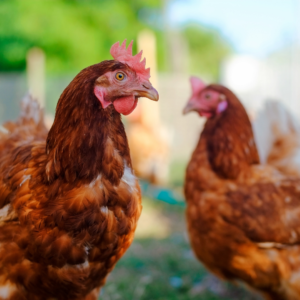 Got Ticks? Chickens Might be the Best Way to Get Rid of Ticks! Ticks are dangerous little arachnids. They can carry over a dozen different diseases such as Powassan virus, Lyme disease, and Rocky Mountain spotted fever.
Got Ticks? Chickens Might be the Best Way to Get Rid of Ticks! Ticks are dangerous little arachnids. They can carry over a dozen different diseases such as Powassan virus, Lyme disease, and Rocky Mountain spotted fever.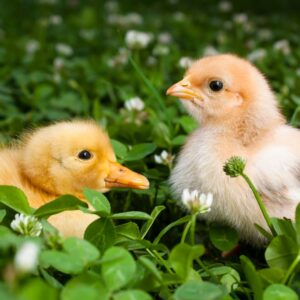 Mixed Flock Guide: Can Chickens and Ducks Live Together? Have you ever been tempted at the farm store, looking for chicks, only to see adorable ducklings and wonder, “Can I raise chickens and ducks together?” The answer is a resounding YES! Ducks and chickens can coexist harmoniously, if their basic needs are met with the right
Mixed Flock Guide: Can Chickens and Ducks Live Together? Have you ever been tempted at the farm store, looking for chicks, only to see adorable ducklings and wonder, “Can I raise chickens and ducks together?” The answer is a resounding YES! Ducks and chickens can coexist harmoniously, if their basic needs are met with the right 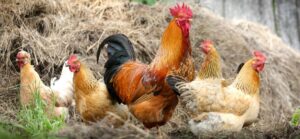 Chicken Predators – What You Need to Know: Humans aren’t the only animals that enjoy a delicious chicken dinner.
Chicken Predators – What You Need to Know: Humans aren’t the only animals that enjoy a delicious chicken dinner.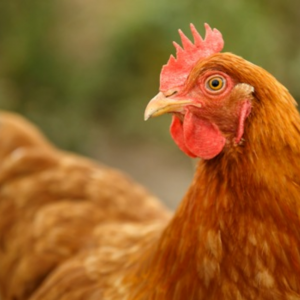 Ahh, the molting process. Shorter days and cooler temperatures…For people, it’s a sign that it is back to school time and fall. To chickens, it’s a sign that it is time to renew their feathers. Losing feathers and re-growing them is called molting and occurs every year when the days get shorter.
Ahh, the molting process. Shorter days and cooler temperatures…For people, it’s a sign that it is back to school time and fall. To chickens, it’s a sign that it is time to renew their feathers. Losing feathers and re-growing them is called molting and occurs every year when the days get shorter.